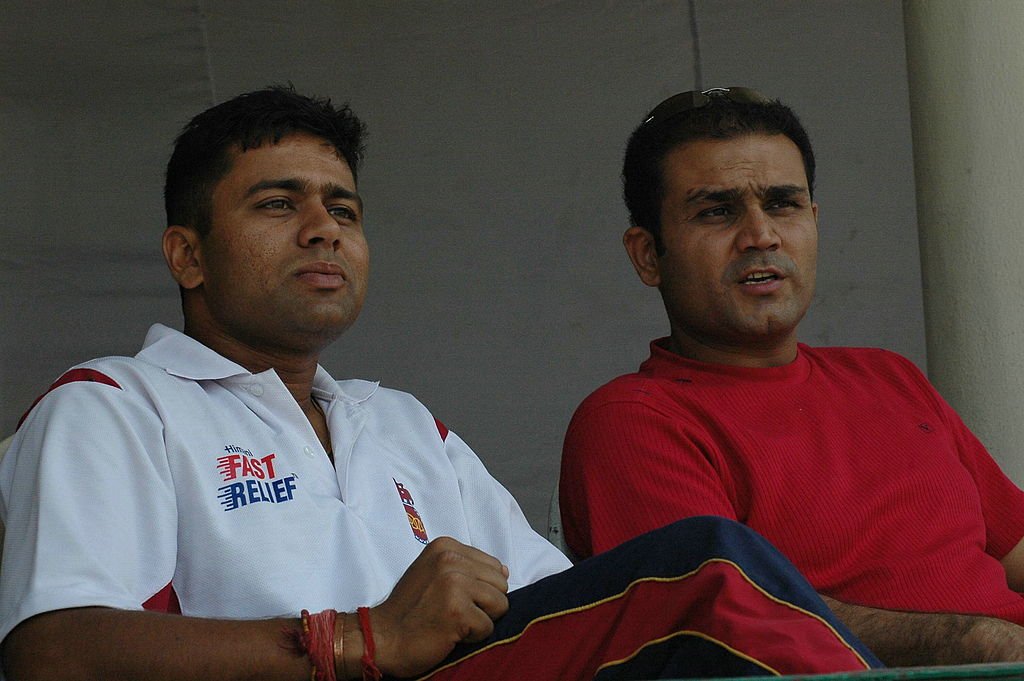
Aakash Chopra, former Indian cricketer turned commentator, recently expressed his displeasure regarding KL Rahul’s dismissal during a match in the IPL. This decision involved the use of the third umpire, and Chopra was vocal about his views on the controversial call, adding to the ongoing discussion about technology’s influence on cricket umpiring decisions.
Rahul’s dismissal came after an on-field umpire’s call was reviewed by the third umpire, where the technology seemed to show evidence suggesting that the batter was out. However, the review sparked debate, with many questioning the conclusive nature of the evidence provided. Chopra, while discussing the incident, suggested that the third umpire’s decision lacked the clarity that would typically be expected in such a high-stakes moment.
The controversy stems from the fact that the technology, especially tools like UltraEdge and ball-tracking systems, are not always foolproof, and their interpretation can lead to errors. Chopra, known for his candid commentary, has often raised concerns about the impact of technological decisions in cricket. He argued that while these technologies are meant to assist the umpires, they should not replace human judgment without irrefutable proof.
In this instance, Aakash Chopra emphasized that the evidence was not conclusive enough to overturn the on-field decision, especially considering the marginal nature of the call. He suggested that Rahul had been unlucky, and while he did not outright criticize the third umpire, his disappointment was clear. Chopra’s remarks come in the backdrop of a broader debate in cricket about the increasing reliance on technology and whether it always delivers accurate results. This is particularly relevant in a tournament like the IPL, where every decision can be the difference between a win and a loss.
The use of DRS (Decision Review System) has evolved over time, but as Chopra pointed out, it remains a contentious issue for many players and fans. The reliance on such systems has created an environment where players feel the need to challenge decisions that they believe are wrong, and sometimes, even when the system fails to provide a conclusive outcome, the result still stands. For Rahul, a player who has had his share of ups and downs in recent cricket seasons, the dismissal added to the mounting pressure.
While some might argue that technology has enhanced fairness in the game, critics like Chopra continue to voice concerns. He pointed out that no technology is infallible, and the human aspect of umpiring should not be entirely discarded. The emotional response from players like Rahul, who were seen arguing with the umpire, also reflects the stress and frustration that comes with such decisions. Chopra’s perspective sheds light on the importance of balance in cricket umpiring: technology should be a support, not a substitute for on-field judgment.
Chopra’s criticism also ties into a broader discourse about how Indian cricketers, especially those like Virat Kohli and KL Rahul, react to decisions made on the field. Rahul’s reaction to the call was discussed by other commentators, who pointed out that the batter seemed frustrated but had little recourse when the third umpire upheld the decision. Aakash Chopra, however, seemed to suggest that Rahul’s response was understandable in the context of the marginal evidence that led to his dismissal.
Aakash Chopra’s outspoken criticism of the third umpire’s decision on KL Rahul’s dismissal reflects a growing concern among players and commentators about the inconsistencies in the use of technology during matches. In cricket, especially in high-pressure scenarios like the IPL, even the smallest margin of error can alter the course of a game. For a player like Rahul, who has been under scrutiny for his inconsistent form, such controversial decisions only add to the mental pressure. Chopra’s remarks indicate that the evidence provided by the third umpire in this case wasn’t convincing enough to justify the dismissal, and he implied that the decision could have been reversed if human judgment had been given more weight.
While technology has undoubtedly helped improve accuracy in umpiring decisions, it remains imperfect. Systems like Hawk-Eye, UltraEdge, and ball-tracking are not foolproof, and their accuracy can sometimes be questioned, especially when the evidence presented is ambiguous. Chopra’s dissatisfaction with the third umpire’s decision highlights a deeper issue: the increasing reliance on technology, which, according to some critics, removes the human element of the game. The emotional and psychological toll on players like Rahul, who face these marginal calls, cannot be ignored, and Chopra believes that a more careful balance must be struck between technological assistance and umpire discretion.
Overall, Chopra’s critique highlights a significant aspect of modern cricket – the growing reliance on technology and its impact on the human side of the game. His comments reflect the complexities of cricket umpiring and the growing discontent among some players and fans about the accuracy of third umpire calls. With the game continuing to evolve, debates like this one are likely to intensify, leaving room for further discussion on the role of technology in cricket’s future.
As fans and analysts continue to digest these umpiring decisions, one thing remains clear: technology is here to stay in cricket, but its implementation must be flawless to avoid controversies like the one Chopra highlighted.

